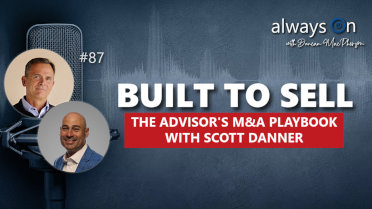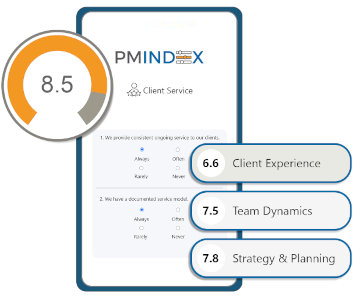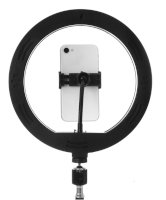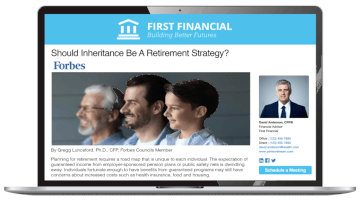Stewardship and the Anatomy of a Referral

On a macro level, you have to get clear on the mechanics and motivations that lead to consistent referrals. Start by asking yourself two questions:
- Why don't they?
- Why should they?
Most of your clients don't "go there" because they are unclear of how it looks to get involved in someone's life and potentially put their own reputation on the line. They are undermined by a subconscious "no good deed goes unpunished" mindset, so they don't get involved, even when the opportunity is presented. It's not that they're unconvinced or unmotivated, there is just some uncertainty about referring, so they don't. Unless a client or partner is crystal clear about how it will reflect on them, there's a blockage.
There is a nurture/nature dynamic at play. With some people, you don't have to overthink it. They are wired to be "power brokers." They like to come through for people and they are on the lookout to make connections. You can nurture that attitude with others.
Look at the word coincidence - stemming from the word coincide - a need a friend has, that aligns and coincides with the confidence a client has for your value - the friend bared his or her soul, the conversation prompted an instant thought of you, and boom - an incredible coincidence of wants and value. Your client wants his or her friend to be taken care of and wants them to be in good hands. Your client also wants you to thrive, but in that order, not the other way around. It's not because of a sense of obligation to you. It's about doing a friend a favor.
Lead with Purpose
It all has to be built on a rock-solid foundation of service and stewardship. You have to position the concept of speaking to a friend of a client as a service you are providing to the client - without any expectation that it may lead to business. The client has to then, in turn, view it as doing a friend a disservice by not lighting the path to you. That is the nexus of advocacy. It feels just as good to come through for someone as it does to be taken care of - and as it does to attract new clients to your business.
That foundation is framed in purpose and process:
- Step 1 - define the what and why
- Step 2 - define the who and how
What and Why
It's an introduction, not a referral. Take the word referral out of your language and focus more on the activity rather than implied productivity. Then, tell people why you do it. It's rooted in your sense of purpose. Helping people is why you chose this profession, and it's easily the most fulfilling part of it. Punctuate that by saying, "if you ever happen to introduce someone to me, they do not need to become a client to take advantage of this service. If they are important to you, they are important to me."
That form of professional scarcity and stewardship is also your bridge to clarifying who you're suited for.
Who and How
Be sure to tell the world who they should introduce - you'll talk to anyone who is important to the client - but you only accept new clients who are introduced provided it's a good fit. Describe your ideal client based on AAA PLUS and remind them that you are all things to some people, rather than the other way around.
Communication on who is important for many reasons. By sticking to your defined approach, you've added a circuit breaker that prevents you from going beyond your capacity. However, it needs to be reinforced, because occasionally you might have a client tell you, "I was thinking about introducing my friend, but I don't think he's big enough for you." Which might seem like a sensible interpretation and reaction, until you find out that the friend has a successful business and a variety of needs that would, at least on the surface, suggest an alignment of interests. Professional scarcity can be a double-edged sword. If that ever happens, remind them first of the PLUS component - that the primary factor of fit is that they are People Like US. Secondly, remind clients that an introduction to be a sounding board for a friend is not tied to "how big they are," and then let the process figure the rest out.
Now, we reach the pivot to outlining for a client "how to get things rolling."
"There is a process in place that my clients use to make an introduction. If you feel compelled to steer someone my way, step one is to give me a call. Tell me about your friend and get the wheels in motion. I'll take it from there. I'll reach out and have an initial chat. There is no expectation it needs to go any further than that. I'm led by them. If they want to meet, I'll schedule some time and send out my introductory kit so that they can learn a little about my people, my practice and my process in advance, and then we can go from there, and you can hold me accountable that this will be a good use of their time."
Provide specifics in terms of what will happen, and then instructions for the actions they can take. Based on your compliance realities, you can encourage an introductory text or email, or even a direct message on social media. Whatever the method, clarify the process precisely. When they are well coached, they will know to be on the lookout for triggering events, and know how to bridge their friends' dissatisfaction with an easy-to-understand statement - "My guy works with business owners and he knows his way around liquidity events like no other, I can make an introduction."
Remember: Advocates call you directly on behalf of a friend. Clients endorse you and tell their friends to call you, and you know how that generally works out.











